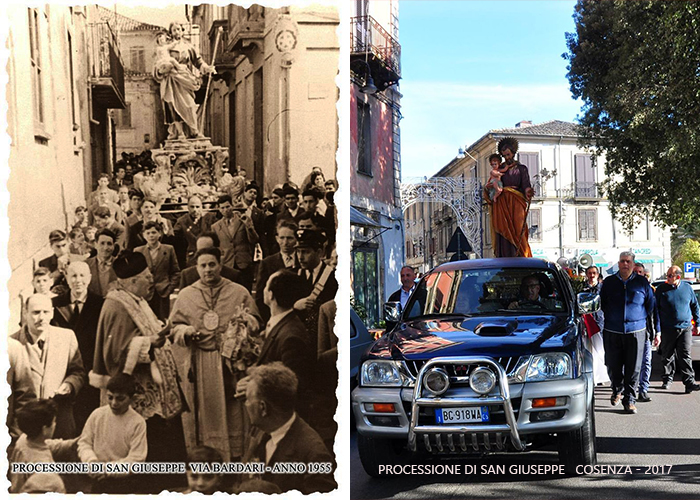san-giuseppe
March 19, 2017
feast-day and father’s day

part one
March 19 is the feast-day of Saint Joseph. The holiday’s roots date back to the middle ages, when Sicily underwent a major drought that threatened a massive famine. The locals prayed to their patron saint to bring them relief in the form of rain. In exchange, they promised to honor St. Joseph, the husband of Mary, with a proper banquet. Sure enough, he answered their prayers. In return, they feasted on local foods such as fava beans, which thrived after the rain, as well as many sweets. Since the feast occurs in the middle of Lent, it is a meatless celebration.
The Father’s Day angle is a more modern emphasis. As Catholicism shrinks to a tradition, rather than an active religion, the day is more about fathers than the Saint. (Most notices on social media have holy-card pictures of St. Joseph, but text over the images wishing congratulations.)
There are two things I associate with this date:
- – the tradition of naming children born on March 19 after St. Joseph. My sister was born on March 19, 1963 and was named Josephine. This naming tradition also applied if the child was born either the day before or the day after the 19th. My cousin Joe who was born on the 18th of March.
- – eating fave. These early spring beans were planted back in the fall and wintered in the cold ground, but with the spring rain, the plants would shoot up and produce their log green bean-pods. Eating the fave when they are fresh and tender minimizes the bitter taste. (Up in Sault Ste Marie, the fave will be ready in June. Talk about a radically different harvest time-frame.)
There was little fanfare in Aprigliano around St. Joseph, because none of the churches had statues of him and therefore there were no processions. Interesting enough all my relatives from Aprigliano are posting congratulations to fathers and little about the feast-day on their Facebook pages. Even the dessert most associated with this feast-day – zeppole, a dough fritters covered in sugar – are not common in the Apriglianese sweets repertoire.
The old, 1955 postcard is from Pizzo Calabro, a small sea-side town on the Tyrrhenian Sea in south-western Calabria. The photograph on the right (photographer Osvaldo Spizzirri) is from the procession in Cosenza earlier today. (By American standards, Aprigliano is like a suburb of Cosenza, most Apriglianesi work, shop and socialize in Cosenza.) Both pics were posted on the Facebook page Calabria Ieri e Oggi.
Oh my, how things have changed in 62 years!